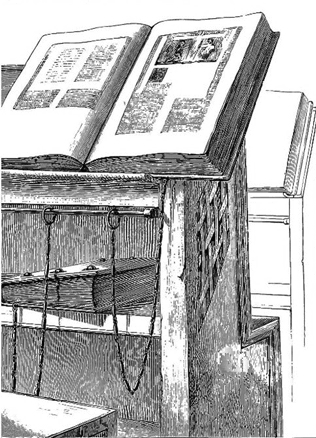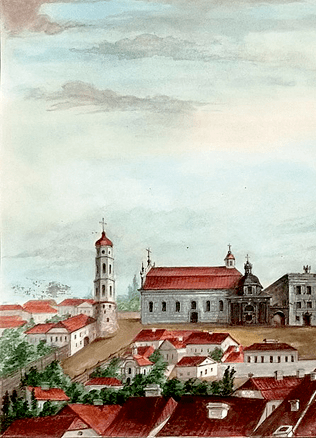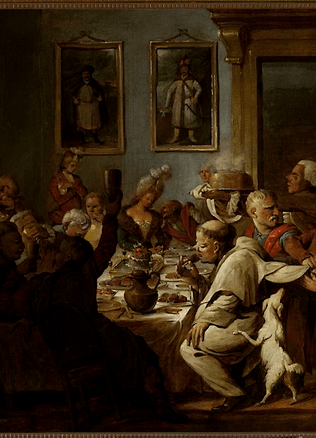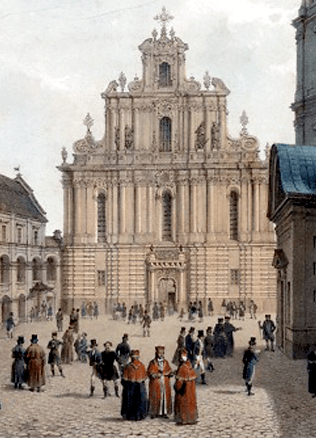The Furniture the Residents of Vilnius in the 17th and 18th Centuries
The homes of the residents of Vilnius featured a number of different pieces of furniture in the 17th and 18th century, such as benches, several types of chairs and armchairs, tabourets, and tables. They slept in beds, on sofas or on special chests that also served as beds. Various kinds of chests were also used to store things alongside wardrobes, baskets and garment hangers. Inside the houses, folding screens, clocks on walls and tables, as well as pictures and musical instruments served as decorations of the interiors. The interiors of the well-off, that is. The most comprehensive sources on the matter include post-mortem property inventories, household inventories and wills as most of them provide information on how the elite people of Vilnius actually lived.
One might consider an interior of a standard home the litmus test for the social and economic situation of the richer part of the society.
Types and quantities of the furniture inside a house reflected a person’s financial situation in the first place rather than his or her occupation. For instance, differences between the furniture possessed by merchants and artisans were insignificant. The less advantaged part of the urban society lived in simpler houses with meagre interiors that featured low-quality locally made furniture. The poorest, such as beggars, had no furniture at all. Therefore, the historians writing about the furniture in the old Vilnius, Stasys Samalavičius being the most distinguished in the field, usually mean the furniture owned by the elite. They used furniture to sit, to lie down, to cook and to consume food. Special furniture such as counters, huge tailor tables, cabinets and wardrobes was intended for professional activity. Merchants, artisans and lawyers worked both at their homes and at other premises. Well-to-do residents of Vilnius would decorate their homes with various interior details including mirrors, clocks, pictures, musical instruments and carpets.
Where and at what did the Vilnans sit?
Benches were the most common pieces of furniture. Smaller or larger benches featured all living areas including rooms, porches and kitchens. They would stand around tables and beside the walls. A room inside the burgomaster’s house featured two tables with benches around them in 1721. The wealthy used woodworker-made benches produced of natural wood and sometimes painted in green, red or white. Ordinary people used self-made benches.
Wooden chairs of several different types were common in the houses of the wealthy and the middle class. Some of them, designed to accommodate several sitting people, looked like benches while others featured backrests and arm supports, two of which are known to have stood inside the burgomaster’s house. The wealthy owned from several to more than a dozen chairs with fabric or leather upholstering. Other burgomaster had 16 chairs of that type in 1698 while an Advocatus had six chairs with leather upholstering and another three with fabric upholstering in the second half of the 17th century, according to his property inventories. The burgomaster of Vilnius Stroczynski left twelve chairs after his death in 1698. Apart from tawed leather, woodworkers used suede, Morocco leather and kurdiban, the leather with gilded decorations, for upholstering. Leather upholstering was mainly either black or red. Different kinds of fabric were used for upholstering too, including embroidered and plain textile, velvet, wool, and flannel – usually green, sky-blue or red. The chairs like these were valued three to five złoty apiece. Some chairs were brought in from abroad. Advocati, city council members, and rich merchants had chairs imported from the Kingdom of Prussia and other countries. The wealthy also possessed one or more armchairs. In 1724, M. Reiner’s house featured one large embroidered armchair worth 18 złoty and one small wooden armchair worth 15 złoty. At about the same time, burgomaster Hramowicz had five upholstered armchairs.
Tabourets were rarely used by the residents of Vilnius. They only occasionally feature the inventories of the time. Despite that, their prices equalled and even surpassed those of chairs. The 1729 list of furniture owned by a merchant D. Morawski includes one tabouret worth six złoty while the burgomaster P. Kosobudzki had several tabourets with flannel upholstering valued four złoty each in 1775.
Every burgher family had at least one table. They were used in kitchens and dining rooms. Bedrooms featured smaller dressing tables, writing desks stood in studies while children sometimes enjoyed special tables as well.
The richest homes featured special tables for games, gambling, coffee and smoking.
Lime and oak wood was used to produce the better quality tables while the ordinary ones were usually made of pinewood. Some tables featured veneering and decorations such as straw encrustation. Legs of moose or other wild animals were also used as table decorations. One female merchant had in 1684 an oak wood table valued 15 złoty and a large table with drawers worth ten złoty and made of lime wood. A huge draw-top table owned by a merchant was valued as much as 75 złoty in 1724. Some residents of Vilnius possessed stone or marble tables, usually black or white. One P. Packewicz had a marble table in 1711. The less prosperous part of the society used simple and cheap rectangular wooden tables very similar to those inside most of the inns throughout Vilnius.
Chest: a wardrobe for the rich, a bed for the poor
Rich city dwellers slept in beds of several different types, including doubles and collapsible. The 1693 inventory of the cap maker Joachim Sebestjanowicz includes a foldable bed while the merchant named Baldowski had a collapsible one. The documents sometimes mention beds with baldachin-like “roofs” made of various fabrics, including glossy cotton, just like the one the aforementioned cap maker had in 1702. Satin and other expensive fabrics were used to tailor the curtains hanging above the beds. The 18th century inventories feature sofas without backrests among all kinds of other furniture owned by the residents of Vilnius. Young children would sleep in small rocking beds. One of these stood in the house of a caster K. Revel in 1719, according to the inventory of his possessions. Therefore, the residents of Vilnius practiced the same “culture of sleep” as the dwellers of other cities in Poland and broader Europe. Ordinary people slept on benches, chests and bed-chests.
A chest was a popular piece of furniture in many homes. Chests were made of oak and pine wood or metal, sometimes with leather upholstering. Some of them featured locks and metal bindings, some were painted red, yellow, black or green. The wealthiest homes boasted Gdansk-made chests decorated with woodcarvings as well as chests from Königsberg or Mogilev. The rich people had three, four or more chests. The burgomaster of Vilnius E. Szperkowicz had six chests in 1686 while his later counterpart M. Stroczynski had seven. Chests were used to keep garments, carpets, weapons, pictures and many other items.
Various wardrobes, wall-mounted cupboards and shelves made of oak, walnut and other sorts of wood were used to keep clothing and smaller household items including tableware. Wooden wardrobes made by local woodworkers and decorated by woodcarvings were among the most expensive furniture. They sometimes featured drawers, small windows and sphere-shaped or convoluted column-like legs. Assessor S. Sokolowski left a two-door wardrobe worth 280 złoty after his death in the second half of the 17th century. The burgomaster of Vilnius P. Kosobudzki had a veneered wardrobe with glass doors valued 100 złoty in 1775. Five years later, the inventory of another burgomaster, Jozef Minkiewicz, features a 126 złoty wardrobe with an English clock.
The residents of Vilnius were not very different from their counterparts in other Central and Eastern European cities in terms of the furniture they had in their homes. This shows that Vilnius looked westward in choosing its lifestyle.
Literature: S. Samalavičius, Vilniaus miestiečio buto atributika XVII–XVIII a. šaltiniuose, Vilniaus miesto kultūra ir kasdienybė XVII–XVIII amžiuose, sudarė Almantas Samalavičius, parengė Aivas Ragauskas, Vilnius, 2011, p. 231–255; A. Ragauskas, Vilniaus miesto valdantysis elitas XVII a. antrojoje pusėje (1662–1702 m.), Vilnius, 2002, p. 406–411.
Aivas Ragauskas



